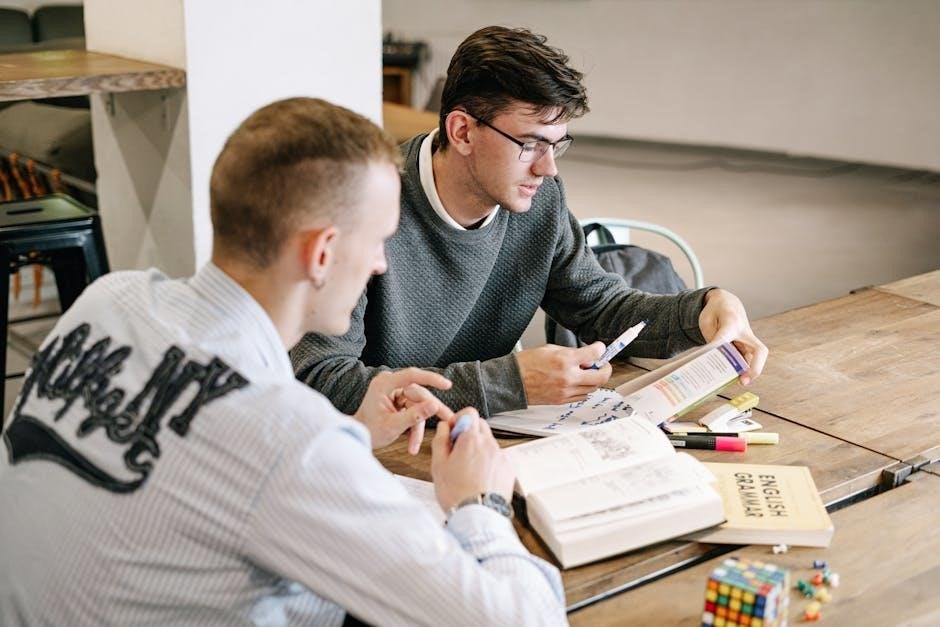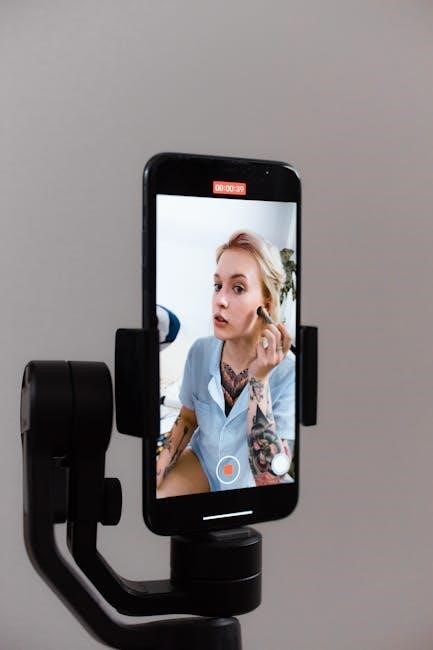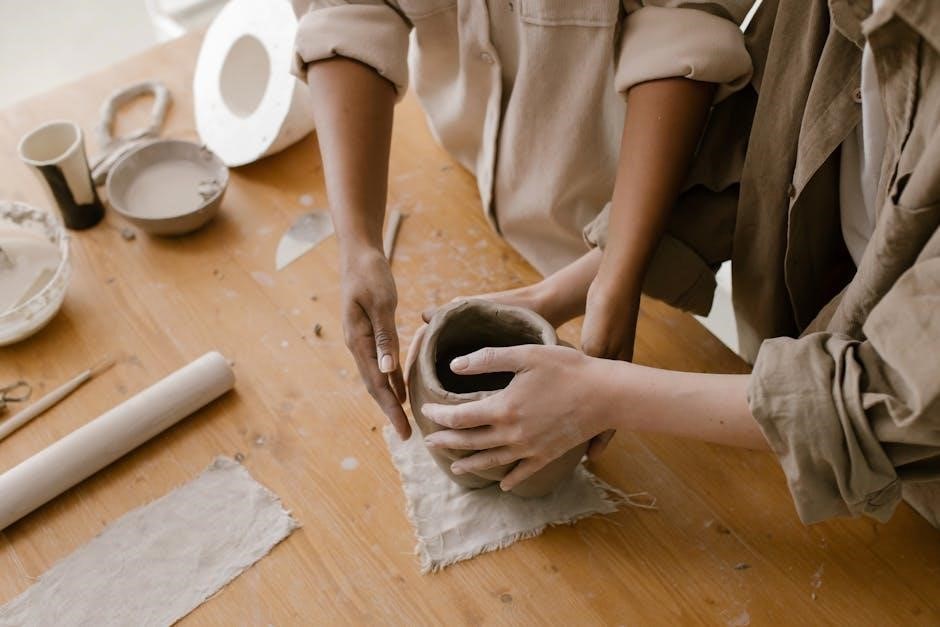Discover the fun and creative process of cloning a willy, a DIY project that lets you create a realistic silicone replica for personal or shared enjoyment.
Using alginate and silicone, this step-by-step guide helps you achieve an exact copy, offering a unique way to explore intimacy or keep a memorable keepsake.
Perfect for couples or individuals, cloning a willy combines art and practicality, providing a customizable and durable result that captures every detail with precision and care.
What is a “Clone a Willy” Tutorial?
A “Clone a Willy” tutorial is a step-by-step guide to creating a realistic silicone replica of a penis using alginate molding and casting techniques. It’s designed for DIY enthusiasts and couples looking to explore intimacy creatively. The process involves mixing alginate to create a mold, followed by pouring silicone to produce a durable, customizable clone. Popular among long-distance couples, it offers a unique way to maintain sexual connection. Kits are available online, making it accessible for anyone to try this fun and innovative project at home.
Why People Are Interested in Cloning a Willy
People are drawn to cloning a willy for its unique blend of intimacy and creativity. It offers a fun and personal way to explore sexuality, whether for solo satisfaction or sharing with a partner. Long-distance couples find it a meaningful way to stay connected, while others appreciate the novelty of creating a custom clone. The process is also seen as a way to capture a memorable keepsake, making it a popular choice for those seeking a playful yet practical DIY project.
Overview of the Process
The cloning process involves three main stages: creating a mold, casting the silicone, and finishing the clone. First, a mold is made using alginate, a safe and quick-setting material. Next, liquid silicone is poured into the mold to replicate the shape. After curing, the silicone is removed and the clone is ready. This method ensures a detailed and durable replica, offering a fun and creative way to achieve a personalized result with minimal effort and expertise.

Materials and Equipment Needed
Essential materials include alginate for molding, silicone for casting, and mold containers. Tools like mixers, measuring cups, and a heat-resistant surface are also required.
Alginate for Molding
Alginate is a key material for creating the initial mold. It’s a fast-setting, non-toxic powder mixed with water to form a flexible, body-safe gel. When prepared correctly, it captures fine details, making it ideal for replicating textures and shapes. Cool water helps slow the setting process, giving you enough time to mix and apply it properly. Proper measurement and quick mixing are crucial to avoid lumps. Once set, the alginate mold is durable enough to hold its shape for the silicone casting step, ensuring an accurate and detailed clone.
Silicone for Casting
Silicone is the perfect material for creating a durable, flexible, and realistic clone. It captures intricate details from the alginate mold, ensuring a lifelike texture and appearance. When mixed properly, silicone flows smoothly into the mold, minimizing air bubbles. Once cured, it retains its shape and offers a soft, body-safe finish. Available in various colors, silicone allows for customization, such as adding vibrational features or matching skin tones. Proper mixing and pouring techniques are essential to achieve a flawless, long-lasting clone that feels natural and authentic.
Mold Containers and Tools
Proper mold containers and tools are essential for a successful cloning process. Use a clean, sturdy container to mix and hold the alginate, ensuring it’s large enough to accommodate the willy. A mixing stick or spoon is necessary for blending alginate evenly. Smoothing tools, like a spatula, help remove air bubbles and ensure a uniform surface. Measuring cups or scales are crucial for accurate alginate and silicone ratios. Flexible wires can be used to create poseable features. A stable workspace and protective gloves are recommended for handling materials safely and efficiently.

The Cloning Process Step-by-Step
Prepare the area, mix alginate, create the mold, pour silicone, and let it cure. Finish by removing and refining the clone for a realistic, durable result.
Preparing the Area and the Willy
Ensure the area is clean and well-lit for comfort and precision. The willy should be clean, dry, and erect for an accurate mold. Use a trimmer to remove excess hair for a smoother process. Apply a light layer of petroleum jelly to prevent sticking. Choose a comfortable position, either sitting or standing, to minimize movement during molding. Keep the room at a comfortable temperature to maintain erection. Timing is crucial—mix alginate quickly and insert within 2 minutes to avoid setting issues. A relaxed and aroused state ensures the best results. A partner’s assistance can help keep things steady and fun. Rushing can lead to poor mold quality, so take deep breaths and stay calm.
Mixing the Alginate
Start by using cool water, as warm water accelerates the setting process. Combine the alginate powder with water in a well-ventilated area, stirring thoroughly to avoid lumps. Use a measuring cup for precise amounts to ensure the right consistency. Mix quickly but gently to prevent air bubbles. The mixture should be smooth and pourable within seconds. Once mixed, act fast—alginate sets rapidly, typically within 2-3 minutes. Pour the mixture into the mold container immediately to capture the best impression. Avoid delays, as this can lead to a less detailed clone. Proper mixing ensures a smooth, bubble-free mold.
Creating the Mold
Gently pour the mixed alginate into the mold container, ensuring it fills evenly. Avoid air bubbles by pouring slowly and steadily. Once the alginate is in place, quickly insert the willy into the mixture, holding it steady to prevent movement. The alginate will set rapidly, capturing every detail. Ensure the area is clean and the person is comfortable to avoid any shifts during the process. This step is time-sensitive, as the alginate hardens quickly, so precision and speed are key to achieving an accurate mold. Proper alignment ensures a detailed and realistic clone.
Pouring the Silicone
Once the alginate mold is set, carefully pour the mixed silicone into the mold, ensuring complete coverage. Use a mixing stick to guide the silicone evenly, avoiding air bubbles. Gently vibrate the mold to eliminate any trapped air. Work quickly, as silicone sets fast. Allow the mixture to cure thoroughly, following the product’s instructions. Proper pouring ensures a smooth, detailed clone. Avoid overfilling, as this can create excess material that needs trimming later. This step is crucial for achieving a realistic and durable final product that captures every detail accurately. Patience ensures a flawless result.
Curing the Silicone
After pouring the silicone into the mold, allow it to cure completely. This step is critical for the durability and detail of the final clone. Typical curing times range from 30 minutes to several hours, depending on the silicone type. Ensure the mold is in a stable, room-temperature environment to prevent warping. Avoid disturbing the mold during curing, as this can create imperfections. Once cured, the silicone will be firm and ready for removal. Proper curing ensures a smooth, realistic texture and long-lasting results. Patience is key to achieving a flawless clone.
Removing and Finishing the Clone
Gently pull or flex the mold to release the cured silicone clone. Once removed, inspect for any excess material or imperfections. Use a craft knife or scissors to trim edges and smooth rough areas. For a more realistic finish, lightly sand the surface or add texture using fine tools. Avoid using harsh chemicals, as they may damage the silicone. Properly finishing the clone ensures a natural feel and longevity. Store your finished clone in a safe, dry place to maintain its quality and durability over time.
Tips for the Best Results
Ensure a clean, dry workspace and prepare all materials in advance. Avoid rushing the process, as patience yields the best outcomes. Keep the room cool to slow curing, allowing precise detail capture. Properly align the mold and clone for a seamless finish. Use gloves to handle materials for better control and hygiene. These steps will help achieve a high-quality, realistic clone that meets your expectations.
Using Cool Water for Alginate
Using cool water when mixing alginate is essential for a successful mold. Cool water slows the setting process, allowing adequate time to insert the willy without rushing. Avoid warm or hot water, as it accelerates the hardening, leading to potential imperfections. By using cool water, you ensure the alginate captures precise details, resulting in a more accurate and durable mold. This step is crucial for achieving a high-quality clone, so always prioritize water temperature for optimal results.
Timing the Insertion
Timing is critical when inserting the willy into the alginate mold. Once mixed, the alginate sets quickly, typically within 2 minutes. Delaying insertion can result in a distorted or incomplete mold, while rushing may lead to air bubbles or improper positioning. Ensure the area is prepared and the alginate is mixed before insertion. Proper timing ensures a precise and comfortable molding process, capturing all details accurately. Avoid waiting too long, as this can cause discomfort or compromise the mold’s integrity. Quick action is key for the best results.
Adding Customization Options
Customization enhances the cloning experience, allowing personal touches to make the replica truly unique. Users can add flexible wires to create poseable features or incorporate vibrations for added sensation. Some kits offer options for color variation, enabling users to match skin tones or add a playful twist. Customization ensures the clone meets individual preferences, making it more meaningful and functional. These options transform a simple clone into a tailored creation, providing endless possibilities for personal expression and enjoyment. It’s a way to make the clone distinctly yours, catering to specific desires and fantasies. Creativity knows no bounds in this process.

Safety and Precautions
Ensure proper hygiene and use body-safe materials to prevent irritation. Avoid harsh chemicals and follow instructions carefully to maintain safety throughout the cloning process.
Hygiene and Sanitation
Proper hygiene is crucial when cloning a willy to prevent infections or skin irritation. Always wash your hands thoroughly and clean the genital area before starting.
Sterilize all tools and equipment, and ensure the workspace is clean. Use body-safe materials to avoid allergic reactions. Avoid harsh chemicals and follow instructions carefully.
Sanitize the mold and clone after creation to maintain cleanliness. Regular hygiene practices will help ensure a safe and successful cloning experience for all parties involved.
Avoiding Common Mistakes
To ensure a successful cloning experience, avoid common pitfalls. One major mistake is waiting too long to insert the penis into the alginate mold, as it sets quickly, often in under two minutes.
Another error is improper mixing, which can lead to bubbles or uneven textures. Ensure the alginate is mixed thoroughly with cool water to prevent rapid hardening.
Additionally, not preparing the area properly can cause contamination or discomfort. Always follow instructions precisely and maintain a clean environment to achieve the best results.

Where to Buy Clone-a-Willy Kits
Clone-a-Willy kits are available online through retailers like Amazon or specialty adult stores, offering convenience and variety for those interested in creating their own custom clones.
Online Retailers
Clone-a-Willy kits are widely available on popular online platforms like Amazon, eBay, and specialty adult stores. These retailers offer convenient shopping experiences, ensuring discretion and ease of purchase. Many websites provide detailed product descriptions, customer reviews, and competitive pricing to help you make an informed decision. Additionally, some online stores offer customizable options, allowing you to personalize your kit further. With just a few clicks, you can have everything needed for your cloning project delivered right to your doorstep.
Specialized Adult Stores
Specialized adult stores offer a more personalized and discreet shopping experience for Clone-a-Willy kits. These stores often have knowledgeable staff who can provide expert advice and recommendations. Many adult stores carry a variety of kits, including premium and customizable options, catering to different preferences and needs. Visiting a physical store allows you to see the products firsthand and ask questions, ensuring you find the right kit for your project. Additionally, some stores host workshops or events, making the experience even more engaging and educational.

Reviews and User Experiences
Users praise the fun and unique experience of cloning a willy, while others criticize the cost and molding challenges. Overall, it’s a creative way to explore intimacy.
Positive Feedback
Many users find cloning a willy an enjoyable and creative experience, praising the realistic and durable results. It’s often highlighted as a fun way to explore intimacy or preserve a memory. Long-distance couples appreciate the unique connection it provides. Some users also enjoy the option to customize the clone with vibrations or other personalized touches, making it a memorable and satisfying project for many. Overall, the process is seen as a fun, innovative way to capture intimacy and create something truly personal.
Common Complaints
Some users report challenges with the alginate setting too quickly, making it difficult to capture details accurately. Others mention the cost of kits as a downside, especially for the quality received. A few find the process messy and time-consuming, particularly when dealing with silicone pouring and curing. Additionally, some users express frustration with bubbles forming in the mold, which can lead to imperfections in the final product. Despite these issues, many still find the end result satisfying and enjoyable.
Legal and Ethical Considerations
Ensure consent and privacy when creating a clone. Use responsibly, respecting boundaries and avoiding malicious intent. Consider ethical implications and respect all involved.
Consent and Privacy
Consent is crucial when cloning a willy. Ensure all parties involved agree to the process and its intended use. Respect privacy by not sharing the clone without explicit permission.
Creating a replica raises ethical concerns. Always obtain clear, enthusiastic consent to avoid misunderstandings or harm. Consider the emotional and legal implications of its creation and use.
Using the Clone Responsibly
Using a cloned willy responsibly involves treating it with respect and ensuring it aligns with all parties’ boundaries and consent. Avoid misusing the clone in ways that could harm or embarrass others.
Be mindful of the emotional implications and potential consequences. Use the clone only for its intended purpose and communicate openly with your partner about its use to ensure comfort and mutual agreement.

Troubleshooting Common Issues
Identify and resolve issues like uneven textures or stuck molds by adjusting mixing times and temperatures. Ensure proper curing and avoid rushing the process for better results.
Dealing with Bubbles in the Mold
Bubbles in the mold can ruin a perfect clone; To prevent them, mix alginate slowly and thoroughly, ensuring no air pockets form. If bubbles appear, gently tap the mold or use a toothpick to release them before the alginate sets. For silicone, pour slowly and in one steady stream to minimize trapped air. If bubbles persist, allow the silicone to sit for a few minutes before pouring. Proper preparation and patience are key to achieving a smooth, bubble-free result.
Fixing Imperfections in the Clone
If your clone has small bubbles or uneven areas, don’t worry! Use fine-grit sandpaper to gently smooth out the surface. For deeper imperfections, apply a small amount of fresh silicone to fill gaps and let it cure. Paint or touch-up kits can also be used for minor details. To ensure a seamless finish, work carefully and avoid over-sanding, as this may damage the clone. With patience, your final product will look polished and professional, ready for whatever use you have in mind.
Cloning a willy is a fun, creative project that lets you capture intimacy or create a unique keepsake. With patience and the right tools, you’ll achieve impressive results!
Final Thoughts on Cloning a Willy
Cloning a willy is a unique and engaging DIY project that combines creativity with intimacy. Whether for personal use or as a gift, the process offers a fun way to capture a memorable keepsake. While it requires attention to detail and patience, the end result is a realistic and durable silicone replica. Users often find the experience enjoyable and rewarding, especially when shared with a partner. It’s a modern twist on intimacy, blending art and practicality for those looking to explore new ways of connection.